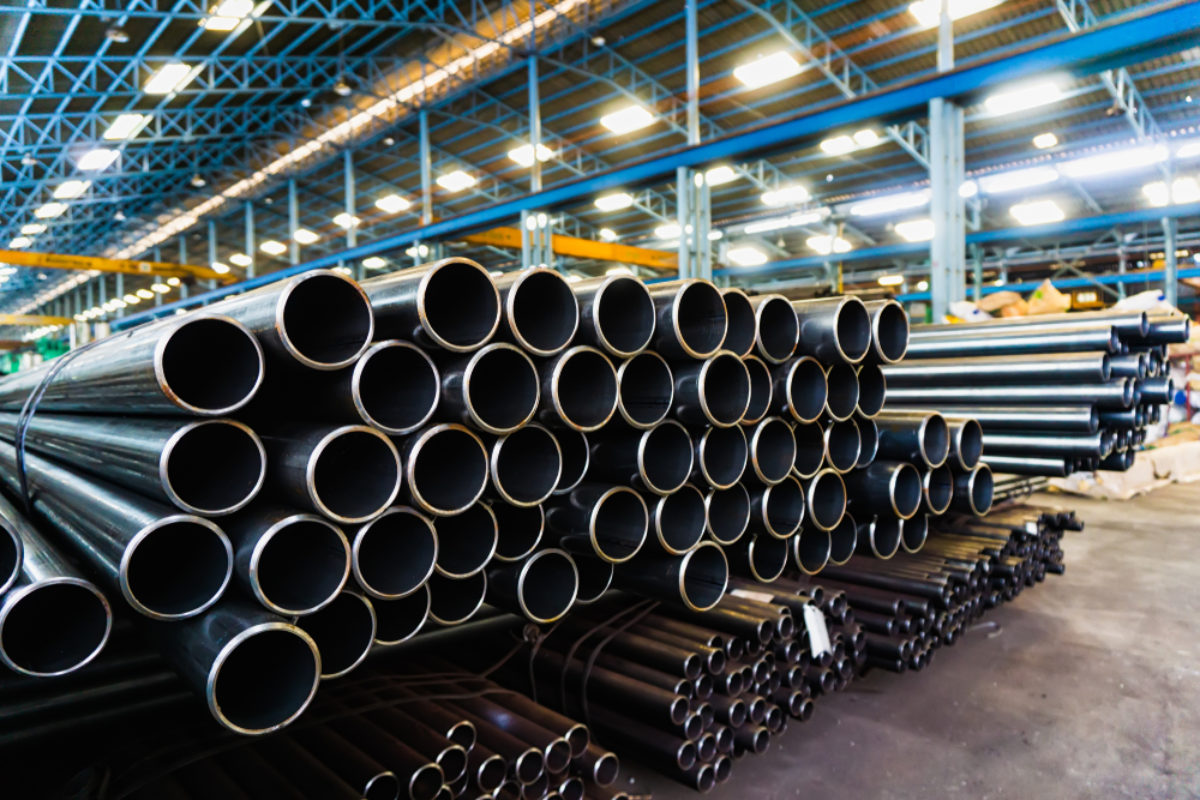Steel is one of the most versatile materials in construction and industrial applications, especially where strength, durability, and resilience are crucial. However, when it comes to high-temperature environments, selecting the appropriate type of steel is essential. High-temperature applications can include anything from power generation plants and refineries to manufacturing processes where steel structures are exposed to extreme heat for extended periods. Choosing the right steel for these applications ensures not only performance but also safety and longevity.
Why High-Temperature Applications Require Special Steel
In high-temperature environments, standard steel can undergo structural changes, resulting in loss of strength, deformation, or corrosion. Elevated temperatures can cause steel to expand, weaken, or oxidize, which can compromise the integrity of structures and pipelines. To combat this, steels used in these environments are designed to resist high temperatures, minimizing the risks of warping, cracking, or structural failure.
Special high-temperature steels contain elements like chromium, molybdenum, and nickel, which enhance their heat resistance and make them more suitable for such demanding applications. These alloying elements help the steel maintain its mechanical properties under extreme heat, prevent scaling, and provide oxidation resistance.
Types of Steel Suitable for High-Temperature Applications
- Carbon Steel
Carbon steel is widely used for high-temperature applications, particularly in construction and pipelines. However, it’s essential to choose the right grade, as not all carbon steels are designed for prolonged heat exposure. Low-carbon steels have good strength at moderate temperatures, while higher-carbon varieties may lose strength if temperatures rise excessively. For example, ASTM A106 and ASTM A53 carbon steel pipes are commonly used in power plants, refineries, and other high-temperature environments due to their ability to withstand moderate heat. - Chromium-Molybdenum Steel (Cr-Mo Steel)
Chromium-molybdenum steel, often referred to as Cr-Mo steel, is highly resistant to oxidation and corrosion, making it ideal for high-temperature applications. The chromium provides heat and oxidation resistance, while molybdenum enhances strength. Cr-Mo steels are widely used in industries like oil and gas, where pipelines and pressure vessels are exposed to high temperatures and corrosive conditions. ASTM A387 and A335 are popular Cr-Mo grades used for heat-resistant applications, especially in boilers and heat exchangers. - Stainless Steel
Stainless steel, especially grades like 304 and 316, is frequently used in high-temperature environments due to its excellent resistance to heat, oxidation, and corrosion. Stainless steel’s high chromium content creates a protective oxide layer, which helps the steel retain its strength and resist scaling under high temperatures. For even higher temperature resistance, grades like 310 and 321 are ideal due to additional elements like nickel and titanium, which provide superior performance in extreme conditions. - Inconel and Other Superalloys
Inconel and similar superalloys, composed of nickel, chromium, and other elements, offer unparalleled heat resistance and strength retention at temperatures exceeding 1000°F. These materials are typically reserved for the most demanding high-temperature applications, such as aerospace, chemical processing, and energy production. While more expensive than carbon and stainless steel, Inconel is invaluable for environments where prolonged heat exposure is a constant.
Factors to Consider When Choosing High-Temperature Steel
When selecting steel for high-temperature applications, several factors should guide your decision:
- Operating Temperature Range:
Understanding the maximum temperature the steel will face helps narrow down the choice. Carbon steels are suitable for moderate temperatures, while stainless steels and Cr-Mo steels are better for higher ranges. Superalloys like Inconel can handle the most extreme temperatures. - Corrosion and Oxidation Resistance:
High-temperature environments often increase the risk of oxidation and corrosion. Steels with higher chromium content, such as stainless steel and Cr-Mo alloys, provide greater resistance to these factors, helping maintain the steel’s integrity. - Strength Requirements:
The type of load the steel will bear—whether it’s tension, compression, or bending—is also crucial. Cr-Mo steel and stainless steel grades designed for high-stress environments can provide the necessary durability under load. - Environmental Exposure:
If the steel is exposed to chemicals or abrasive materials, additional corrosion resistance may be needed. This is particularly important in industries like oil and gas, where pipelines must withstand both high temperatures and corrosive conditions.
The Role of Specialized Steel Components in Construction
In construction and foundational applications, specialized steel products, such as Stealth Pipe and Steel pieux en h, play a significant role in structural stability. Pieux en h, or H-piles, are often used to support heavy loads and provide deep foundational strength in high-stress environments. For projects that involve heat exposure, selecting a steel type that resists both the mechanical load and thermal stress is essential. Using high-temperature-resistant steels in components like Stealth Pipe and Steel pieux en h ensures that structures can withstand both environmental and mechanical challenges, offering reliable performance over time.
Conclusion
Choosing the right steel for high-temperature applications is crucial for ensuring the safety, durability, and effectiveness of structures and pipelines exposed to extreme heat. From carbon steel for moderate temperatures to superalloys like Inconel for extreme heat, each steel type offers unique properties that make it suitable for different applications. By considering factors such as temperature range, corrosion resistance, strength requirements, and environmental exposure, engineers and project managers can make informed decisions on the best materials for their projects. Specialized components like Stealth Pipe and Steel pieux en h, when combined with the appropriate high-temperature steel, contribute to building resilient structures that withstand the test of time and environmental demands.


